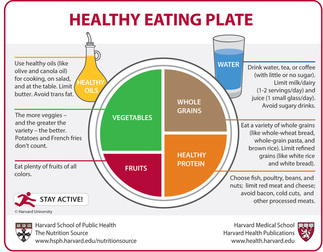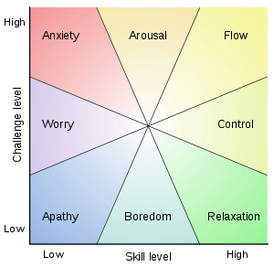In my experience, sifting through diet fads and way too many "superfood" ads for reliable scientific guidance on how to nourish my body so it will look good, feel good and perform to a high standard has been tedious and often frustrating . . . until I discovered The Nutrition Source, a free online resource from the Department of Nutrition at the Harvard School of Public Health.
Here's the web address: http://www.hsph.harvard.edu/nutritionsource/
The Nutrition Source is a valuable resource from one of the world's most reputable primary sources of scientific and empirical information.
No single resource that I've come across provides similarly accurate and comprehensive core nutritional information.
The central feature of The Nutrition Source is The Healthy Eating Plate, which provides fundamental information for creating a nutritionally complete meal, as well as some tips on common unhealthy food choices.
| Some of the website's additional features include simple explanations of the essential nutrition components, such as carbs, fat, protein and vitamins and minerals with more useful information on how to select healthy sources of each. The Home Cooking section helps you bring these ideas off the page and onto your table with breakfast, lunch and dinner recipes. |
Another extensive section on proper exercise explains the requisite time and intensity for producing noticeable fitness benefits and gives practical tips for creating an active lifestyle to preserve and add to the fitness gains you've already achieved.
The Frequently Asked Questions section is useful for both the nutritional novice looking to learn the basics and the food fanatic looking to micro-manage their diet for optimum health. The Nutrition Index expands the FAQ section by providing insights into many other nutrition issues that might have piqued your interest or generated concern. The site also provides links to equally reliable books, research, reports and news related to health and fitness for further learning.
The bottom line is this: Your time is precious and it should be enjoyed. Good health is wealth. It's a currency you can spend on acquiring the experiences you want most in life.
The PATH² exists to help you do that by distilling the confusing and often contradictory information about health (and other aspects of quality of life) in the media down to an essence of the most valuable – accurate, practical and concise – information for creating a life you love to live.
This post represents a limb on the tree of a healthy, happy life that will branch out over the next several weeks. Subjects such as the nutritionally complete meal, essential nutrition components, home cooking and achieving and maintaining a healthy body weight will be unpacked in a clear, concise way for you to easily incorporate into your life as it presently exists. So if you don't follow the links in this post you won't miss anything if you keep reading the Good News.
If you enjoyed this post consider tweeting or sharing it so others might, too.
BODY – MIND – SPIRIT
| |


 RSS Feed
RSS Feed